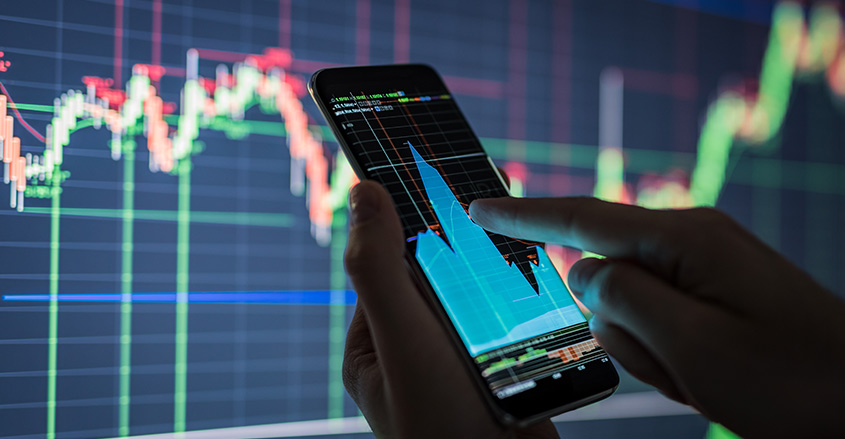The cost to build a diversified stock portfolio is often the highest barrier for new investors. The outlay required to buy a basket stocks is more than the dollars available.
Instead of buying a fixed number of shares, what if you could buy a fixed dollar amount of a basket of stocks? Robinhood and SoFi were the first brokers to offer that choice for investors.
It would cost $4,000 to buy one share of the top five stocks in the Nasdaq 100. Seventy-five percent of that simple portfolio would be in one stock — Amazon (AMZN).
Instead, Robinhood offers fractional shares for $1 or more. So, instead of a large overweight in one stock, an investor could buy the same dollar amount in fractional shares for an equal weight portfolio.
An investment of as little as $5 thus can buy equity ownership of the five largest companies in the world.
What made this option practical was the competition among brokers to attract traders. The enticement was lower stock trading commissions.
The $20 commission per trade at low cost brokers years ago kept getting lower until hitting zero in late 2019. Every broker from the established firms such as Schwab to the newest mobile platforms now offer commission-free trading.
The next step is for brokers to pay us to trade. We can only hope.
Schwab and Fidelity have recently joined the stock trading apps Robinhood and SoFi in offering slices of stocks or fractional shares. This provides opportunities for new and experienced investors.
For new investors, the dollar barrier to investing has dropped to $1. For more seasoned investors came the ability to build stock portfolios with weightings significantly different from indexes.
To build a share-based portfolio with 5% invested in Alphabet (GOOG) would require a total investment of $28,000 for each share of Alphabet purchased. To include Amazon at 5% would raise the total investment to $60,000.
Now the investor can choose the allocation to each stock and the total dollar amount to invest without constraints.
Learn by doing
Perhaps the greatest advantage of this new opportunity is for young investors without much money to invest. It gets them in the game.
You can paper trade to build experience before putting your dollars to work. Keep a record of when and what shares you would have bought to gain some confidence.
But it does not provide the influence of emotion. It is easy to say you would have held on through a market slide. It is entirely different to do it with your hard-earned dollars at risk.
It is said that fear and greed drive the market. Neither can be simulated with paper trading.
The downside may be the perception that stock ownership is akin to gambling rather than investing. The ease of use of stock trading apps, coupled with zero commissions and $1 fractional shares may promote day-trading over investing.
In the first half of 2020, SoFi trading volume increased over 300% and 35% of the volume was fractional shares. The trading volume increased far more than the number of accounts, indicating more short-term trading than long-term investing.
A stock trade today is only a couple of clicks away on your phone. That makes it seem like the latest viral mobile game.
The difference is the very real dollars put at risk.


